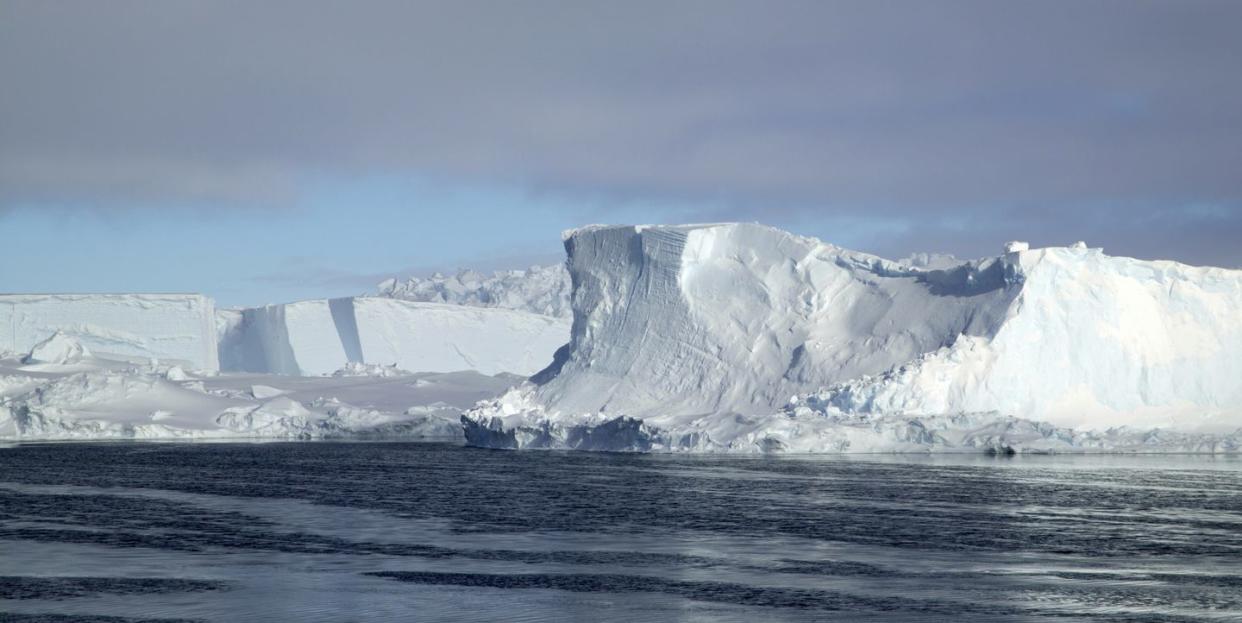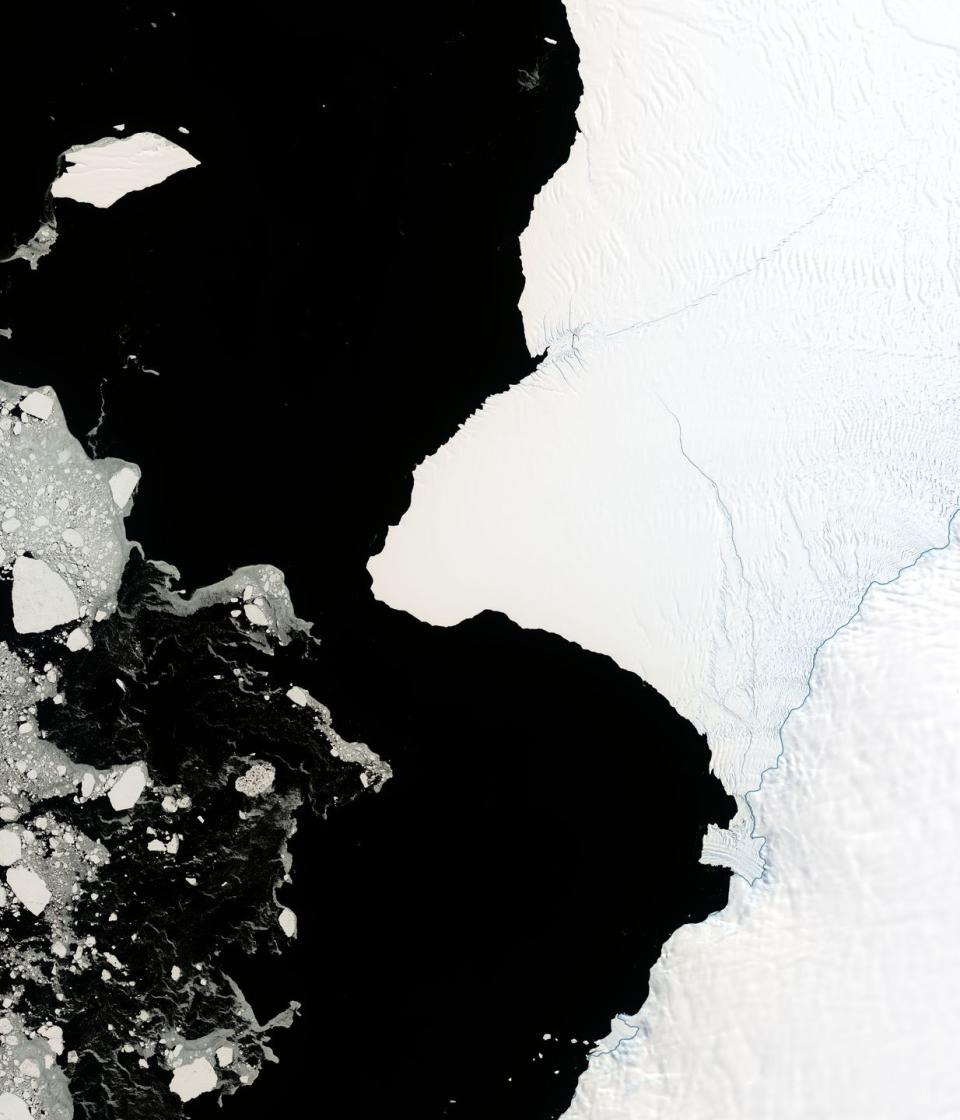An Iceberg Twice the Size of New York City Is Poised to Break Off Antarctica

A large part of Antarctica is about to become an iceberg, according to new images from NASA. An chunk of ice twice the size of New York City is close to breaking off from its ice shelf, and when it goes it could destabilize the entire shelf, taking millions of tons of ice along with it.
The Brunt Ice Shelf in West Antarctica has been monitored by NASA for years, and scientists first started to grow concerned after a large crack started to grow eastward. The crack was first discovered in October of 2016 and nicknamed the ‘Halloween Crack’ as a result. That crack has been progressing inland ever since.

On its own, that crack wouldn’t be a particular cause for concern, but recently NASA has been watching a second crack that's more alarming. That crack started in the southern part of the Brunt shelf and has been heading northward at a steady pace of about 2.5 miles per year, and it’s about 3 miles away from running into the Halloween Crack.
When that happens, a piece of the Brunt Ice Shelf about twice the size of New York City will break off and fall into the sea. By itself, that’s not actually that big of a deal; large icebergs break off Antarctica all the time. The problem is that large iceberg-forming events like this one can trigger additional breaks, potentially leading to the collapse of the entire ice shelf.
In this case, the future iceberg will be the largest iceberg ever formed from the Brunt Ice Shelf since observations began in 1915. There’s no way to know what an iceberg of this size will do to the ice shelf. It may do nothing, or it may trigger the collapse of the whole thing. The latter may even continue to destabilize neighboring regions.
('You Might Also Like',)

